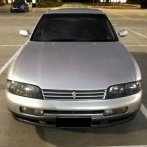Head Port Size, Velocity Vs Horsepower
Announcements
-
Similar Content
-
Latest Posts
-
I definitely do recommend having a fab/grinding/dirty shed or area to keep all that grinding dust out of your main shed. But you're right, it doesn't matter how much room you have you still end up filling it! I might even do a short video which will make it easier to fully take in the horrors of what I've created...
-
It only looks tidy, as most of the stuff that was on the whole back wall, is now in the trailer to go to the tip, or has been shoved in my 2.2x2.4m "Spare parts room", and now I can't get to anything in there Ha ha ha I could definitely do with a bit more space, but I'd just end up with your problems I'm going to enclose the car port beside the garage, and move a lot of stuff into it I think. OR... It will be setup as a fabrication area, and the main garage will have parts storage in it. I'm not sure yet... Need some pictures of that big shed you've got with the bikes and Skyline in
-
No. I think it's gone. 😭 I think you can get body coloured ones on eBay so I think I'll get one of those... Or just hang a red ribbon from the hole and whack a TOW sticker next to it.
-
Can't say I've had a bad experience with one on my car, then again it only gets washed once or twice a year... The wheels on the other hand, get a good spray often due to my shitty dusty pads.
-








Recommended Posts
Create an account or sign in to comment
You need to be a member in order to leave a comment
Create an account
Sign up for a new account in our community. It's easy!
Register a new accountSign in
Already have an account? Sign in here.
Sign In Now